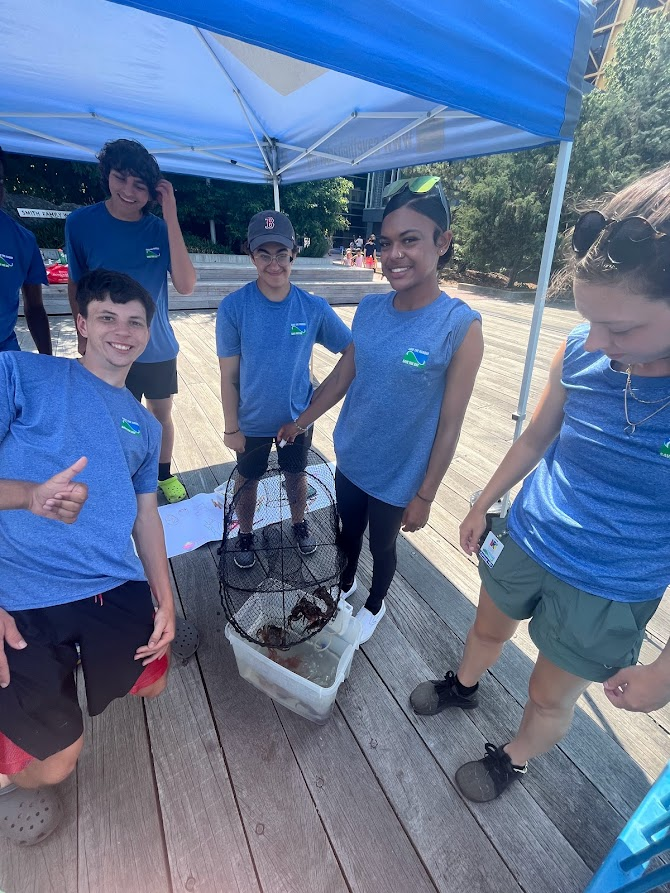Hey y'all!
The Children's Museum group had a very exciting week 3. Or rather, we had a very exciting Thursday which more than made up for the slow days we had for the rest of the week. Due to the heat wave, we found that not a lot of people wanted to stand outside in the sun and fish. Usually we're able to draw a decent crowd to look at and hold crabs from our touch tank, but on Tuesday we were only able to pull up a single crab and on Wednesday we got nothing at all. When we came into work on Thursday, we thought we were looking at another crabless day. But then, one of our campers dropped her fishing line right onto our old crab trap, one that had somehow fallen off of its rope over a week earlier. We reeled it up and discovered 8 green crabs, all alive and well. After that, almost everybody passing by wanted to visit our tent (a.k.a. Aiden's Crab Emporium, with deals you can't refuse).
 |
| Crab rescue operation complete |
On days when we didn't get many (or any) green crabs, we would go down to the dock and pick up a few blue mussels from the sides to show the kids. Blue mussels are pretty small, usually ranging from about 2-4 inches long, with one rounded end and one pointier end. They can be found near the shore in the intertidal and subtidal zones on both the east and west coasts of the United States. Mussels "eat" by taking in phytoplankton from the water. Their eating process actually helps to improve water quality by removing excess material from the oceans. Blue mussels are actually farmed as food for humans, but unlike with a lot of seafood, we don't have to worry much about overconsumption. These creatures can release anywhere from 50 to 200 million eggs every time they reproduce.
While we are yet to get any fish on our fishing rods, that doesn't mean we haven't reeled in anything interesting. The first thing our Monday campers caught was a sea squirt! Also called tunicates, sea squirts are small invertebrates. The size varies with the type of sea squirt, but the ones we caught were around 3 inches long. Sea squirts can be found across the world's oceans but generally stay in sheltered areas, such as near docks and piers. The ones we found were most likely European sea squirts, which are invasive to Boston Harbor. Like blue mussels, sea squirts filter plankton from the water as their food source. The sea squirts are always fun to show to the kids we work with because they act as mini water guns; if you gently squeeze a sea squirt after pulling it from the ocean (or our touch tank), they shoot out a small jet of water. Hopefully we catch some more of these little guys next week!
 |
| Sea squirt: our first catch of the week! |
Peace out y'all :)
McRae
Sources:

No comments:
Post a Comment